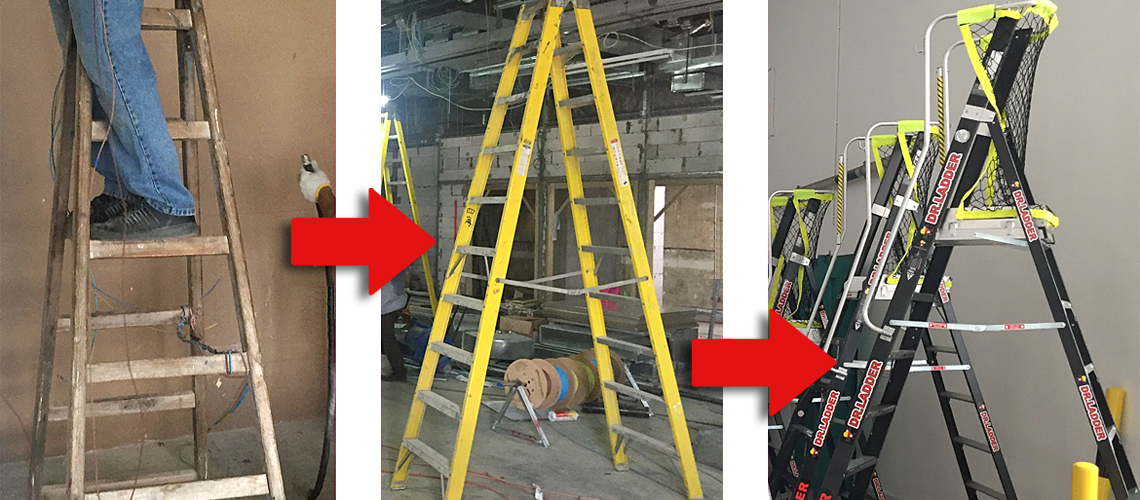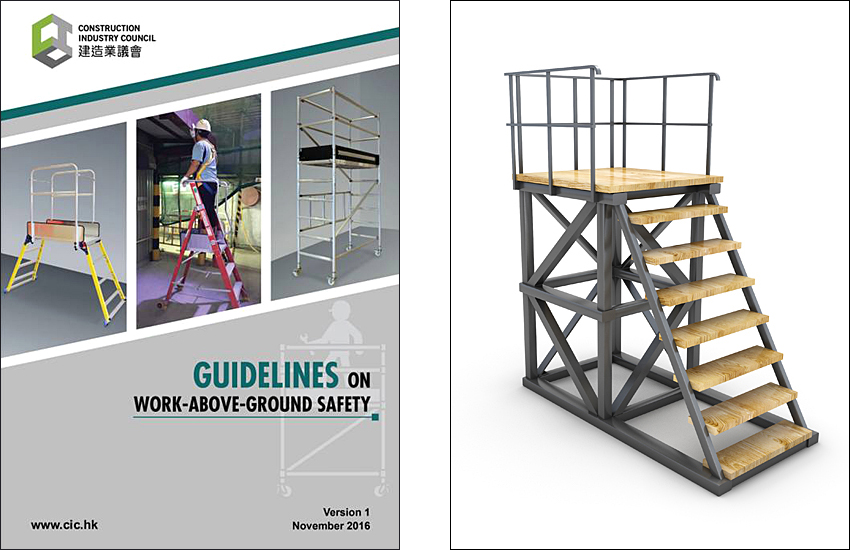Campus Health and Safety
Work-Above-Ground Safety

Are you surprised to hear it is illegal to use trestle ladders in our work?
Most proprietors and employers across the city are facing the same challenge as the requirement to eliminate the use of these common trestle ladders as standing platform for work at workplaces is enforced by the Government according to the general duties of the Occupational Safety and Health Ordinance (OSHO). The new requirement sounds impactful to everyone since it applies to all workplaces, including schools/education institutions.
In fact, the trestle ladder ban originates from a new sub-classification of OSHC used to describe someone who works at a falling distance of 2 metres or below falls down and gets injured. This new sub-classification is called “work-above-ground” instead of the classic classification “working at height” which is now used to describe those who work at a falling distance of more than 2 metres. The trestle ladder was the top cause for falling injury of “work-above-ground” cases, accounting for 33% of those falling injury cases since 2012 with a few fatalities.

Based on the interpretation of the general duties of OSHO, it is the responsibility of the employers to prevent their employees from fall. Regardless of the height you stand on these ladders and no matter what you are working for, there is no exception to anyone as long as you are EMPLOYED. Nonetheless, we are statistically safe comparing to the most dangerous sector - construction. The number of injuries caused by occupational fall in education sector was 48 out of 80,000 employees while it was 349 plus 7 fatal cases out of 113,000 employees for the construction sector in 2016. However, we are legally fragile if these new requirements are overlooked.

Construction Industry Council, 2016, Guidelines on Work-above-ground Safety
The authority now demands proprietors and employers to provide substitutes for trestle ladders. The bestsellers among the substitutes are the railed “step platforms” and “hop-up platforms”. These products are easy to operate. The recent manufacturing of these products focuses on the materials and the requirement of the international standards in order to enhance the inherent safety and ensure the products are legally compatible with “work-above-ground” tasks. However, proprietors, employers and employees are somewhat reluctant to deploy such “step platforms” and “hop-up platforms” because of the elevated cost, heavy weight, bulky size and, more importantly, the practicability at tiny and congested workplaces such as our laboratories making compliance challenging. To comply with this "above ground" safety requirement, all stakeholers must work together to come up with workable and yet compliant measures.
